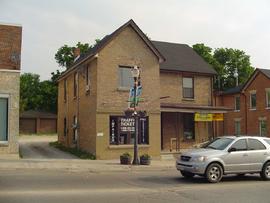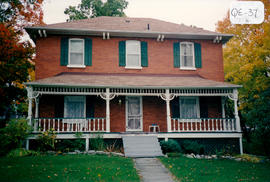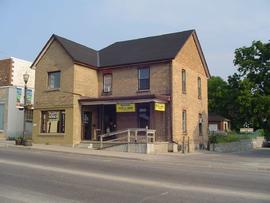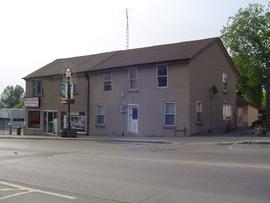- CA BWGPL GJ-HB-2017-03-25-02
- Item
- 1995
Part of George Jackson fonds
The mid-block building located at 37 Holland St. East was built in the Gothic Revival style in the 1880-1890’s. Originally, the left side on the ground floor contained an office occupied by grain buyers. It had a front door and a small window. The remainder of the building was used as living quarters for several families over the years, including Art Hand (a painter and decorator) and his wife (Sawyer), and later their son Orville and his wife Helen (Noble). It was eventually sold to Mr. Glass, a merchant.
The 1½-storey house has an ‘L’-shaped plan with a centre hall. It also has an asymmetrical façade, an off-centre front gable at the façade projection, and a medium-pitched, gable roof. There is a raised, open porch. The existing roof, supports, and railing are not original. Its wide door opening suggests that the original had a transom and sidelights. The door itself is not original. There are small windows with high floor to ceiling heights. Wide windows set into rectangular openings in the projecting bay are not original and the variation in the brick suggests that the original openings were partially bricked in. The windows in the receding bay are set into segmented, arch openings with brick voussoirs and concrete, lug sills. None of the existing windows are original. The building has wood frame construction with brick cladding and a textured, concrete foundation. According to the 2000 inventory, there are few original details remaining in the building. (1, 2, 3)
George Jackson










